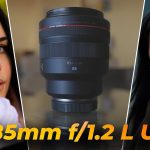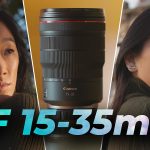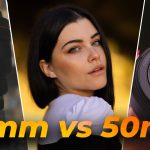In this article, we’ll compare two somewhat equivalent lenses, the Canon RF 85mm f1.2 L USM, and the Viltrox RF 85mm f1.8 STM.
First off, I’m going to show you some photos and videos I took with both of these lenses, and the Canon R5, and then we’ll discuss what’s great, and not so great, about both of these pieces of glass.

Image Quality
The first thing you will notice with both of these lenses, is that they both take amazing photos and videos. I mostly do portraits, which is what the review focuses on, but they both have other applications, which we’ll discuss later on in the video.
Focal Length
First off, both lenses have a focal length of 85mm, which is ideal for portraits, at least when using a full-frame camera.
Whilst any lens will cause some level of image distortion, 85mm is considered to most accurately reproduce the human face, thus not changing the way your model looks too much. If you’re not sure what I mean, think of the fish eye effect that some really wide lenses produce.
All lenses produce some level of distortion, though most of them don’t do anything as extreme as fish eye lenses.

Prime
Another aspect of the 85mm focal length which is worth mentioning is the fact that it’s fixed, as opposed to variable. As you may already know, a fixed focal length tends to produce sharper images, whilst a variable lens, or a zoom lens, has the advantage of zooming in and out.
When it comes to the aperture, the Canon lens opens up all the way to f/1.2, which is really open, whilst the Viltrox lens opens up to f/1.8, which is not quite so open.
The reason why this is important is that the wider the aperture opens, the more light is allowed to reach the sensor, and thus you’ll be able to shoot in low light conditions.
Low Light
Truthfully, you can shoot in low light with any lens, but with something like the Canon 18-55mm kit lens, the aperture only opens up to f/3.5 when zoomed all the way out, or f/5.6 when zoomed all the way in.
This means that, in order to compensate for this, you’ll have to either increase your shutter speed, which can introduce motion blur in your photos, or bump up your ISO, which can lead to noisy images.
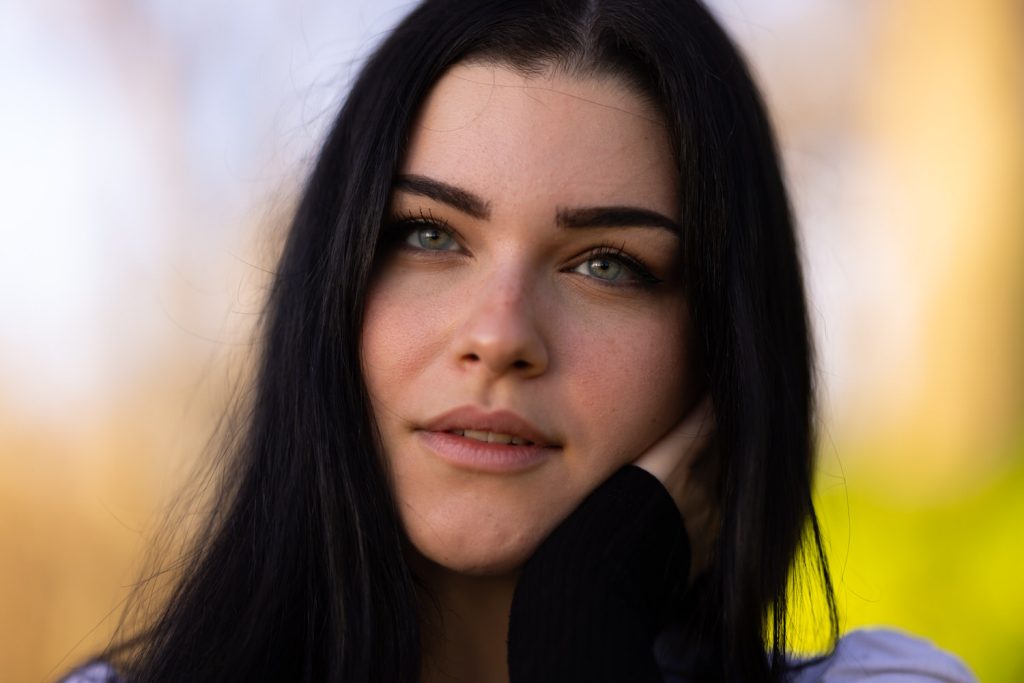
Realistically, when doing portraits with that lens, you’ll want to be zoomed all the way in, and thus realistically your minimum aperture is going to be f/5.6. The reason why you want to zoom all the way in, is that 55mm is closer to the ideal 85mm focal length. If you’re also using a mid, or entry-level DSLR, like the Canon 77D, you’ll probably have a cropped sensor.
Sensor
A cropped sensor actually affects the real focal length, so when zoomed all the way in at 55mm, to find the real focal length, you have to multiply the 55mm by 1.6, which is 88mm. As a result, when using a camera like that, even with the kit lens, you’ll effectively be shooting at 88mm. This was a bit of a tangent, but I figured it’s worth covering.
When it comes to stabilisation, neither of these lenses has it built in. However, if you use them on a camera body that does have built-in stabilisation, like the Canon R5, that will actually provide some stabilisation to your footage.

Vlogging
Given that these two lenses produce such great images, you might be wondering if you should use either of them for vlogging. If you intend to hold the camera yourself, and do the classic vloggy thing, the answer is no.
The higher the millimetre number on the lens, the more zoomed in it is. If you were to use either of these lenses on say, a Canon EOS R5, which is full frame, you’ll get a close-up of every single pore on your nose.
If someone else will be filming you however, this might work well, though a camera with built-in image stabilisation, like the R5, would be recommended.
So you know, if you don’t have the body stabilisation, the footage might end up looking a bit shaky.
YouTubers & Streamers
What if you want to be a YouTuber or a streamer, and have the camera on a tripod? In that case, either lens would perform great, though the Canon 85mm lens will have an edge when it comes to autofocus. The Canon lens will also have the advantage of a wider aperture, thus allowing you to more easily film in low light conditions, and get cleaner footage whilst doing it.
Size & Build
So next up, what about the build quality of these two lenses?
Whilst both feel solid in the hand, this one absolutely has to go to the Canon RF 85mm lens. The build quality is so much nicer, though obviously, it is also way more expensive.
In terms of size, the Canon lens measures 4.62″ in length, just a bit over 4″ in diameter, and weighs around 2.63lb, or just under 1.2kg. The Viltrox lens is just under 4″ in length, and weighs 530 grams, or 1.17lb.

The Viltrox lens is therefore quite significantly smaller, which can be a good or a bad thing, depending on what you’re looking for. I’ll talk about this a bit more later on in the review.
Applications
So, what can these two lenses be used for? Strictly speaking, 85mm is considered best for portraits and headshots. This is all well and good, and both lenses excel in that regard, but what else could they be used for?
Well, you could use them for product photography or videography, though you have to bear in mind that they’re both quite zoomed in, as their focal length is 85mm, so you won’t be able to film the handheld B-roll product shoots that I do.
You could use them for landscape photography if you want, weddings, and basically anything else, though you might struggle with things such as group photos, as you’ll have to put quite a bit of distance between yourself, and the group, in order to fit everyone in.
Another obvious use would be street photography, though I’d have to give the Viltrox the edge on that one. The reason is specifically that it is smaller than the Canon one.
When doing street photography, being as inconspicuous as possible helps a lot, not only because it gets you more realistic photos, but also because you’re less likely to be the target of an individual who might want your camera for themselves.
The Canon lens would make you look a lot more pro when doing professional events though, as it genuinely does look so much more professional. You might scoff at that, but people who don’t know anything about photography and videography will judge you based on your equipment, and given that this might impact future work opportunities, looking as professional as possible absolutely helps.
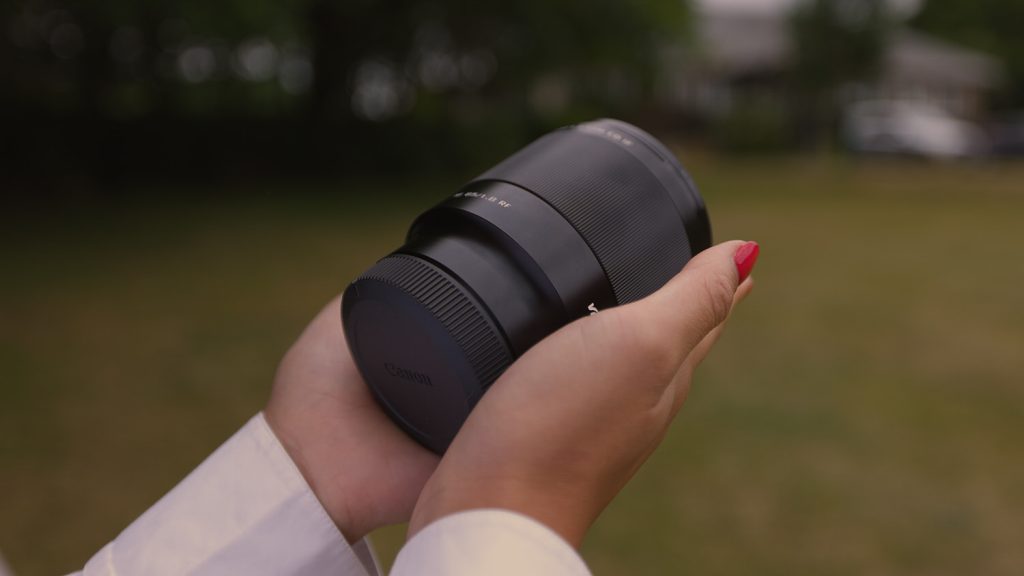
Control
In terms of control, each lens offers up some similar functions, but also an important difference.
In the case of the Viltrox RF 85mm lens, you get an AF/MF switch, which is pretty standard, and you also get a manual focus ring.
The ring itself is actually impossible to miss, as it’s massive. Turning it gives you a satisfying mechanical feeling, without the ring producing any clicks.
The Canon RF lens has a similar setup, although you also get an extra control ring, towards the edge of the lens, near the glass element. This ring is actually programmable in the camera, and it allows you to change different settings on the fly. This includes settings such as shutter speed, colour temperature, etc.
The problem is that because of the location of the ring, it’s actually quite easy to accidentally hit it, and thus unintentionally change settings in the middle of shooting. Whether you want to use it or not is up to you, but be aware that there’s a risk involved.
Longevity
When it comes to longevity, there is a rather large disparity between these two lenses. The Viltrox has no weather sealing, whilst the Canon lens is protected from dust and splashes.
Just like any other piece of complicated technology, I’d just go ahead and assume that it’s fragile, and thus needs to be taken care of.
I’d recommend getting a Sigma UV filter for either of them, as it adds some extra level of protection, and serves as actual insurance from impacts.
There is some debate as to whether UV filters degrade the image quality in some way, and even though it technically does, as light has to pass through more glass, the actual difference is insignificant.
If something hits your main glass element and breaks it, the image quality will be degraded by 100%, so taking a minuscule quality loss in order to prevent that seems worth it to me.
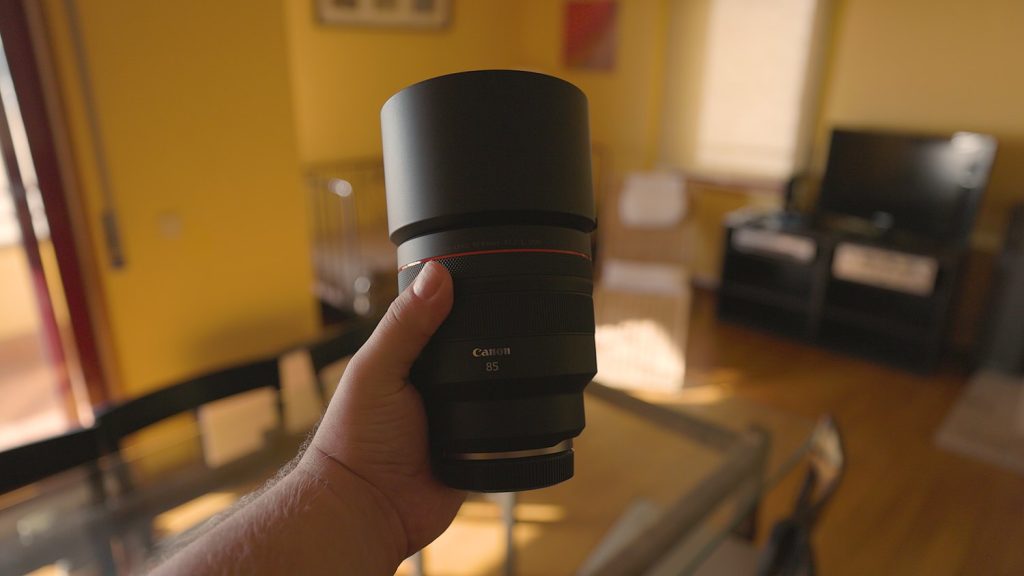
Conclusion
So, which one should you buy?
I think the main issue for people would be the price. Obviously, the Canon lens is significantly more expensive than the Viltrox lens. In fact, it is a few times the price of the Viltrox alternative, and that’s something to bear in mind.
Image Quality
In terms of image quality, I’d say they’re actually somewhat equivalent. I’m sure that if you really zoomed in, you’d find that the Canon lens is sharper, and has less chromatic aberration, but for most people, these issues would not be noticeable.
Also, because the Canon lens is made by Canon, communication between it and the camera body leads to better autofocus, and potentially even better image stabilisation, though that last one is really tough to test, due to there being far too many variables.
The Canon lens also looks way more pro, so if you’re doing a professional job, you will be perceived as being more of a professional, and that can often lead to more jobs, or at the very least it won’t cost you opportunities in the future.
Price
It’s obvious that the more expensive Canon lens is the superior one in this comparison, but what does the Viltrox lens have going for it?
Well, the price is one aspect. Also, it is smaller, and thus takes up less space in your bag, and weighs you down less. Also, if you want to do street photography, the Viltrox lens won’t make you stand out quite as much as the much beefier Canon lens.
If you’d like to purchase any of the items I’ve mentioned in this article, or see how much they cost in your country, I have a link down below where you can view them.
Thank you for reading my comparison review between the Canon RF 85mm f1.2 vs Viltrox RF 85mm f1.8. I invite you to have a look at some of my other articles. We have something for everyone, whether you’re interested in audio, or cameras and lenses. Alternatively, if you prefer video reviews, feel free to have a look at my YouTube channel.
Product Links
Down below you will find all of the items I talked about in this article.
